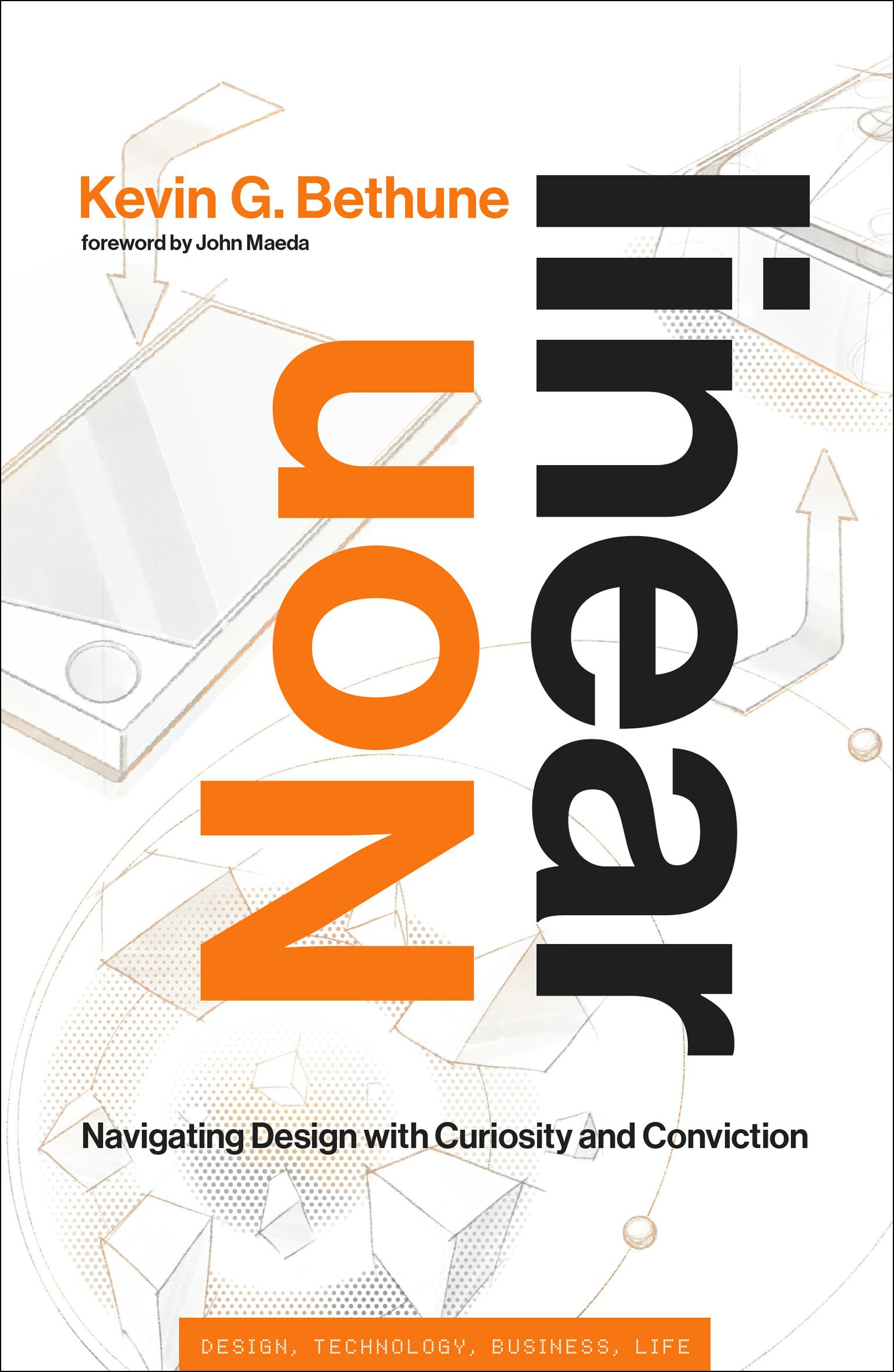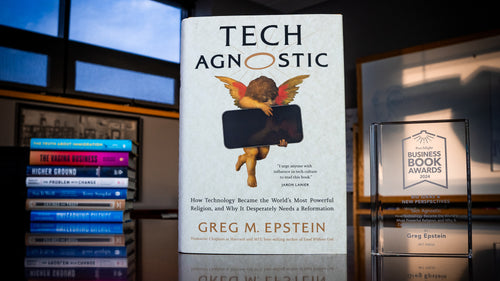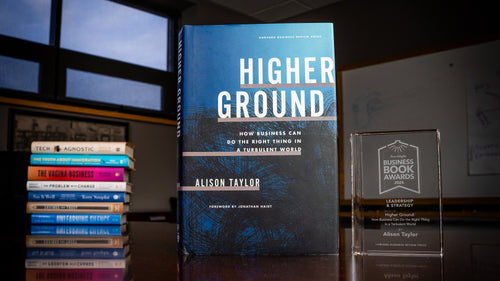An Excerpt from Nonlinear
 In his new book, Nonlinear, author and designer Kevin Bethune quotes the actor Denzel Washington: "To get something you never had, you have to do something you never did." Like any other industry, the field of design, intended to be at the forefront of innovation and creativity, can fall back on repetitive thinking and outdated methods that actually hinder progress.
In his new book, Nonlinear, author and designer Kevin Bethune quotes the actor Denzel Washington: "To get something you never had, you have to do something you never did." Like any other industry, the field of design, intended to be at the forefront of innovation and creativity, can fall back on repetitive thinking and outdated methods that actually hinder progress.
Relying on outdated and repetitive design approaches can result in mediocre outcomes and may even cause harm by overlooking diverse perspectives. In this excerpt, Bethune highlights the importance of recognizing the humanity involved in design work. By acknowledging the full spectrum of a person's life experiences when creating solutions to today's challenges, we can discover new ways to drive change and foster genuine and meaningful innovation.
◊◊◊◊◊
I am a product of a very windy road. I am a designer, entrepreneur, and author based in Redondo Beach, California. I am a husband, a father, and a Black man who’s navigated a very unique journey of multidisciplinary leaps. I am a descendant of America’s original sin of chattel slavery, continually imagining the strength and resilience that embodied my ancestors’ experience. I am married to an Ethiopian-born American who is more able to trace her history as far back as three thousand years from the days of King Menelik and Queen Sheba. Our teenage son represents an amalgamation of both threads of histories and cultures. He lives in a world still plagued by the threads of systemic inequity that attempt to convince him that he’s “less than” or an “other” based purely on the color of his skin. We do our best to expose him to as many things as possible so that he begins to imagine himself doing great things in the future. His dreams matter. We believe in his potential. I try not to worry as he navigates a world vulnerable to police brutality and schools unsafe from guns. I have to place my faith in God for his safety and the safety of my family. Part of recognizing who I am, and who the folks I’m representing are, is that I will consciously rebel against the challenges we face with hope, faith, optimism, curiosity, and creativity. I am.
At the same time, I should embrace another human being with equal gravity. They are. You are. There is the full breadth and depth of a person’s humanity that we should acknowledge and respect. We need to engage others with complete humility, empathy, and compassion. We are not the same, and that’s a beautiful thing. Our stories are like fingerprints: very different. Yours is no more worthy than mine, and vice versa. However, our reverence for each other should hold enough weight to spark healthy curiosity and empathy for one another. In doing so, we’ll unearth opportunities to see the common threads that lie between us, and we’ll share in a common purpose. We can do that while celebrating what makes us different. We should celebrate what we can learn about each other. At the same time, we should also recognize that we navigate much of the same world, the same spaces, and the same constructs. Aspects of my story may not directly translate to someone else, but we might identify with the same circumstances. You might be a parent, the same as me. Despite living in different cities, we may be wresting with remote work through Zoom calls and Slack threads. We can be different and similar, at the same time. When sharing from my lived experiences, I am careful to say that I can only speak for me. Just because I experience something, I shouldn’t assume the same reality on you. I don’t want anyone to feel like they have to do exactly what I’ve done. My only hope is that you might use my story as a mirror to see yourself a little differently and find the courage to bring your full humanity to everything you do.
As we think about how we journey forward in life, the spaces and structures that we navigate are the way they are by design. They were informed by someone. When given an opportunity, we have to unravel who was actually at the table in informing these constructs and recognize the threads of systemic inequity that have persisted within them. My first book, Reimagining Design: Unlocking Strategic Innovation, shined a light on the importance of design at parity with other disciplines in informing the evolution of our spaces, enterprises, and institutions with the hope that we can inform better futures. I wrote it for anyone (regardless of discipline) who’s creatively curious and likely to be proximate to design within a multidisciplinary team. I wrote it for those who wondering how to position themselves in a world undergoing multidisciplinary convergence to meet the complex challenges of our time, and to help them figure out how to make lasting, positive change. For design in particular, I find that designers are especially passionate about the human condition. Their arrival at the problem-solving table is surely welcome based on what the world desperately needs right now—more empathy and compassion. At the same time, their arrival runs in the face of predominant forces that have shaped industries as we know them. From business titans who set the tone of Wall Street to Silicon Valley technologists who pioneered the digitization of our world, design has an opportunity to set a new precedent, a new tone. These precedents are important as we think about bringing the right people around the table.
As we look forward, we can’t forget the underlying thread of diversity, equity, and inclusion (DEI) to ensure the mix of folks around the table actually mirrors the world in terms of representation. Far too many self-proclaimed “world-class” brands and organizations claim to “design for” or “build for” their customers. However, when you peer inside their hallways, their team composition fails to reflect the beautiful diversity of our society. It’s even worse when it comes to their leadership pipelines and board rooms. They will claim rightful position based on a shaky premise of meritocracy and how they ascended career ladders of hardened pedigree. Considering the threads of systemic inequity and the paradigms of power and privilege, is it really that simple? Does it explain why so many are left out? Upon examining their understanding of customers and stakeholders, we usually find significant amounts of bias and blind spots between their offerings and what people actually need. These issues could be avoided if they respected their audience with humility and brought them into the process (i.e., if they opted to design with or build with). I will boldly say that we need to go even further. Beyond designing with, we need to ensure our teams actually include representative members of our diverse society. Representative teammates could broker authentic inroads into those communities that we have yet to authentically engage. Within design, I find the low percentage of BIPOC (Black, Indigenous, people of color) professionals especially disappointing. Our future teams should mirror the beautiful tapestry that is the world.
Excerpted from Nonlinear: Navigating Design with Curiosity and Conviction by Kevin G. Bethune. Reprinted with permission from The MIT Press. Copyright © 2025.



